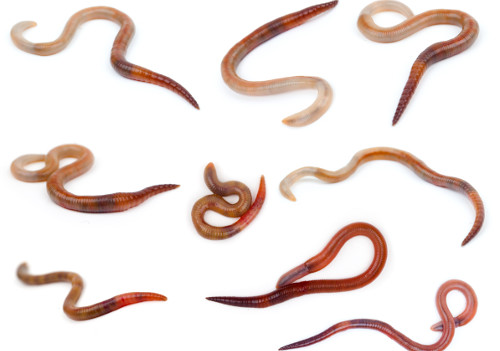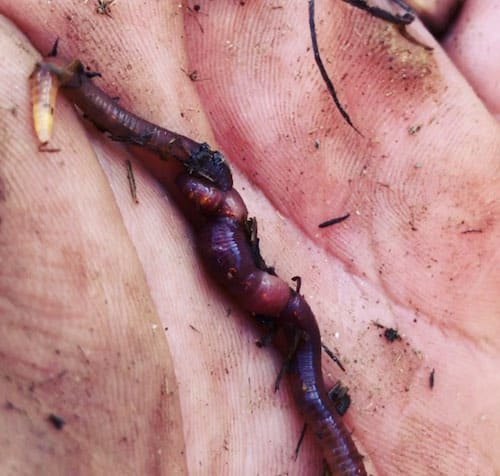Red Wiggler Worms - Boost Your Soil Wellness Normally
Red Wiggler Worms - Boost Your Soil Wellness Normally
Blog Article
Making Best Use Of the Advantages of Red Wiggler Worms: A Comprehensive Handbook for Home Gardeners and Urban Farmers
In the realm of sustainable horticulture methods, red wiggler worms stand as unsung heroes, quietly transforming organic waste right into nutrient-rich spreadings that can function wonders for dirt health and wellness. By checking out the details of exactly how to successfully care for and maximize the advantages of red wiggler worms, people can open a wealth of opportunities for enhancing the sustainability and efficiency of their gardening endeavors.
Comprehending Red Wiggler Worms
Red Wiggler worms, renowned for their reliable composting abilities, are a species of earthworms widely made use of in vermiculture practices. These worms, scientifically referred to as Eisenia fetida, flourish in decaying organic material, making them perfect candidates for composting (Red Wiggler Worms). Red Wigglers are ravenous eaters, with the ability of consuming their very own weight in natural waste daily. Their digestive system process breaks down organic matter into nutrient-rich spreadings, which are a valuable resource for enriching dirt and advertising plant growth.
One secret feature of Red Wiggler worms is their reproductive rate. These hermaphroditic creatures have both male and female reproductive organs, allowing them to replicate swiftly under desirable problems. A fully grown Red Wiggler can generate numerous spawn in a brief duration, making certain a constant population within a composting system.

Setting Up a Worm Bin
When developing a worm container for vermiculture purposes, appropriate preparation and focus to detail are vital for producing a helpful environment for Red Wiggler worms. Begin by choosing an ideal container for your worm container.

Area the worm container in an amazing, dark area away from direct sunlight and extreme temperatures. On a regular basis monitor the wetness levels, including water if the bed linens really feels completely dry or flaky. Feed the worms a well balanced diet plan of vegetables and fruit scraps, staying clear of citrus fruits, onions, and spicy foods. By complying with these actions, you can establish a flourishing worm container that will effectively refine organic waste right into nutrient-rich vermicompost for your garden.
Feeding and Keeping Worms
Ensuring a nutritious and balanced diet regimen is vital for the health and performance of Red Wiggler worms in a vermiculture system. Red Wigglers are starved eaters, capable of eating their own body weight in raw material daily. To keep a flourishing worm population, it is essential to give them with a selection of food scraps such as fruit and vegetable peels, coffee premises, tea bags, and smashed eggshells. Nevertheless, it is essential to stay clear of feeding them citrus fruits, onions, garlic, dairy items, meat, and oily foods as these can be unsafe to the worms or trigger unpleasant odors in the container.
Appropriate dampness degrees are additionally vital for the health of Red Wiggler worms. The bedding must seem like a moist sponge, giving sufficient wetness for the worms to breathe through their skin. Routinely examine the wetness degrees and readjust by including water or completely dry bedding product as needed. In addition, preserving proper temperature useful source problems in between 55-77 ° F(13-25 ° C )will guarantee optimum worm activity and reproduction. By faithfully monitoring their diet regimen, moisture, and ecological problems, home garden enthusiasts and city farmers can sustain a effective and healthy and balanced Red Wiggler worm population for composting objectives.
Harvesting Worm Castings
To effectively extract nutrient-rich worm castings from the vermicompost, a methodical harvesting procedure is necessary a knockout post for making best use of the composting advantages. Red Wiggler Worms. The primary step in gathering worm spreadings is to urge the worms to migrate away of the container. This can be achieved by positioning fresh food scraps on one side and leaving the other side uninterrupted for a few days. Once most of worms have relocated to the side with fresh food, the castings can be gathered from the contrary side.
After the castings have been collected, it is very important to divide any staying worms from the spreadings to stay clear of harming them throughout storage or application. One efficient approach is to produce conical piles of spreadings under brilliant light. Worms will naturally move away from the light, permitting easy separation and removal.
Finally, the gathered worm spreadings need to be stored in an amazing, dark, and completely dry area to maintain their quality and efficiency as a nutrient-rich soil change. By adhering to these steps, home gardeners and city farmers can take full advantage of the advantages of red wiggler worms in their vermicomposting systems.
Utilizing Worm Castings in Horticulture
The unification of nutrient-rich worm spreadings into garden soil can dramatically enhance plant growth and general dirt wellness. Worm castings, also understood as vermicast, are an all-natural plant food produced by red wiggler worms as they damage down raw material. These spreadings are abundant in vital nutrients like nitrogen, phosphorus, potassium, and advantageous germs that promote plant growth and enhance dirt structure.
When utilizing worm castings in horticulture, it is important to blend them extensively into the soil or use them as a leading dressing around plants. The slow-release nature of worm spreadings makes certain a stable supply of nutrients to plants gradually, minimizing the danger of nutrient leaching and advertising lasting dirt fertility. Furthermore, worm spreadings aid boost dirt oygenation, water retention, and microbial task, developing a healthy and balanced setting for plant origins to prosper.

Conclusion
Finally, the use of red wiggler worms in home gardening and urban farming can dramatically profit soil wellness and plant growth. By recognizing exactly how to establish and maintain a worm container, feed the worms correctly, and collect their nutrient-rich spreadings, gardeners can take full advantage of the benefits of these earthworms. Including worm castings into horticulture methods can boost soil fertility and total plant performance. Generally, red wiggler worms provide a sustainable and reliable remedy for boosting garden and farm returns.
In the world of lasting gardening practices, red wiggler worms stand as unrecognized heroes, quietly changing organic waste right into nutrient-rich castings that can function wonders for dirt health.When developing a worm container for vermiculture purposes, correct prep work and attention to information are crucial for creating a favorable environment for Red Wiggler worms. The first step in gathering worm spreadings is to urge the worms to move to one side of the bin. Worm castings, likewise known as vermicast, are an all-natural plant food created by red wiggler worms as they break down natural issue. By recognizing exactly how to set up and keep a worm container, feed the worms effectively, and collect their nutrient-rich spreadings, gardeners can make best use of the advantages of these earthworms.
Report this page